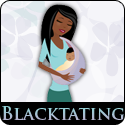Yesterday the Centers for Disease Control released their 2010 Breastfeeding Report Card. The report card gives a state-by-state view of breastfeeding rates in the US, including initiation rates, rates at 6 months and rates at 1 year. This year's report card is especially important because the US government created a national health objectives program called Healthy People in 1979 to set goals for promoting health and preventing disease. The goals are assessed every 10 years so this year we would find out whether or not we had met the goals set in 2009 for breastfeeding.
So how did we do? Not so hot. Goals 16-19 were to "increase the proportion of mothers who breastfeed their babies." Based on a 1998 baseline of a 64% initiation rate, 29% breastfeeding at 6 months and 16% breastfeeding at 1 year, our goals for 2010 were a 75% initiation rate, 50% breastfeeding at 6 months and 25% breastfeeding at 1 year. (Notice that those 1998 baseline rates were taken from a survey conducted by Abbott Labs, the makers of Similac).
So we hit our goal for the initiation rate. We already knew based on numbers from 2006 that about 78% of moms breastfeed in the hospital. So it wasn't really a surprise that we met this goal. And while it is fantastic that so many moms are at least trying to breastfeed, I'm reserving some enthusiasm for these initiation rates because all it means is that a mom put the baby to breast before she left the hospital. While I do believe that most women do want to breastfeed, my guess is that some of this may be inflated by the pressure to at least try breastfeeding and that there are plenty of women who are nursing in the hospital who really don't have much intention of continuing upon discharge.
According to the CDC, 43% of mothers are still breastfeeding at 6 months. So though we narrowly missed meeting our goal of 50%, when you look at the exclusive breastfeeding rate at 6 months, it is an abysmal 13%. At 1 year, 22% of babies are still getting some breast milk.
It's also interesting to look at your own state's rates. I pray for Mississippi and wonder if Oregon could show the rest of us what we're doing wrong. I live in Florida and our rates across the board are way lower than the goals set by Healthy People. You can also find out how many infants are born in Baby Friendly hospitals in your state, how many IBCLCs there are per live birth, if there is a Breastfeeding Coalition and how many infants are supplemented with formula by day 2 in the hospital (answer: too many!)
Although I'm disappointed in the report card scores, I can't say I'm at all surprised. What is the definition of insanity again? Doing the same thing over and over and expecting a different result? We aren't certifying more hospitals as Baby Friendly, we aren't providing paid parental leave, we're not requiring employers to have on-site daycare centers, we're not allowing women to bring their babies to work, we're harassing women for nursing in public and no one really knows how the health care reform will benefit working mothers. Nothing's really changed, so why should our breastfeeding rates?
Never want to miss an update of the Blacktating Blog? Subscribe here. Follow me on Twitter- I'm @Blacktating 
Tuesday, September 14, 2010
CDC Releases 2010 Breastfeeding Report Card
blog comments powered by Disqus
Subscribe to:
Post Comments (Atom)



